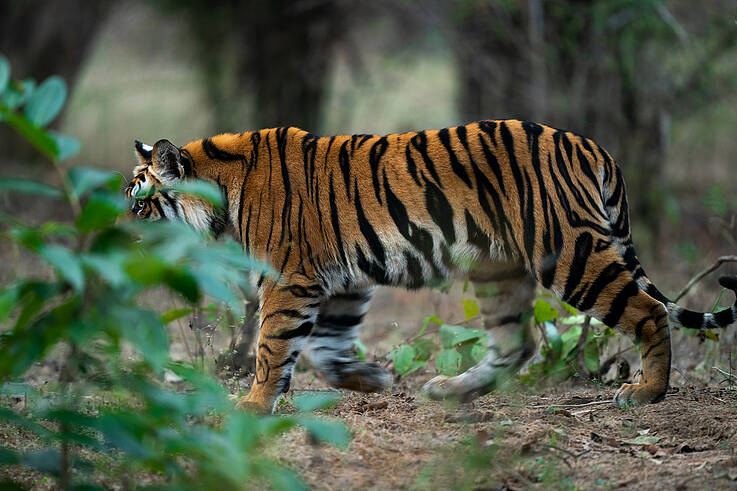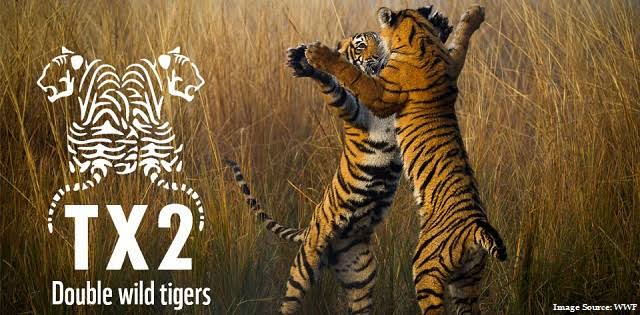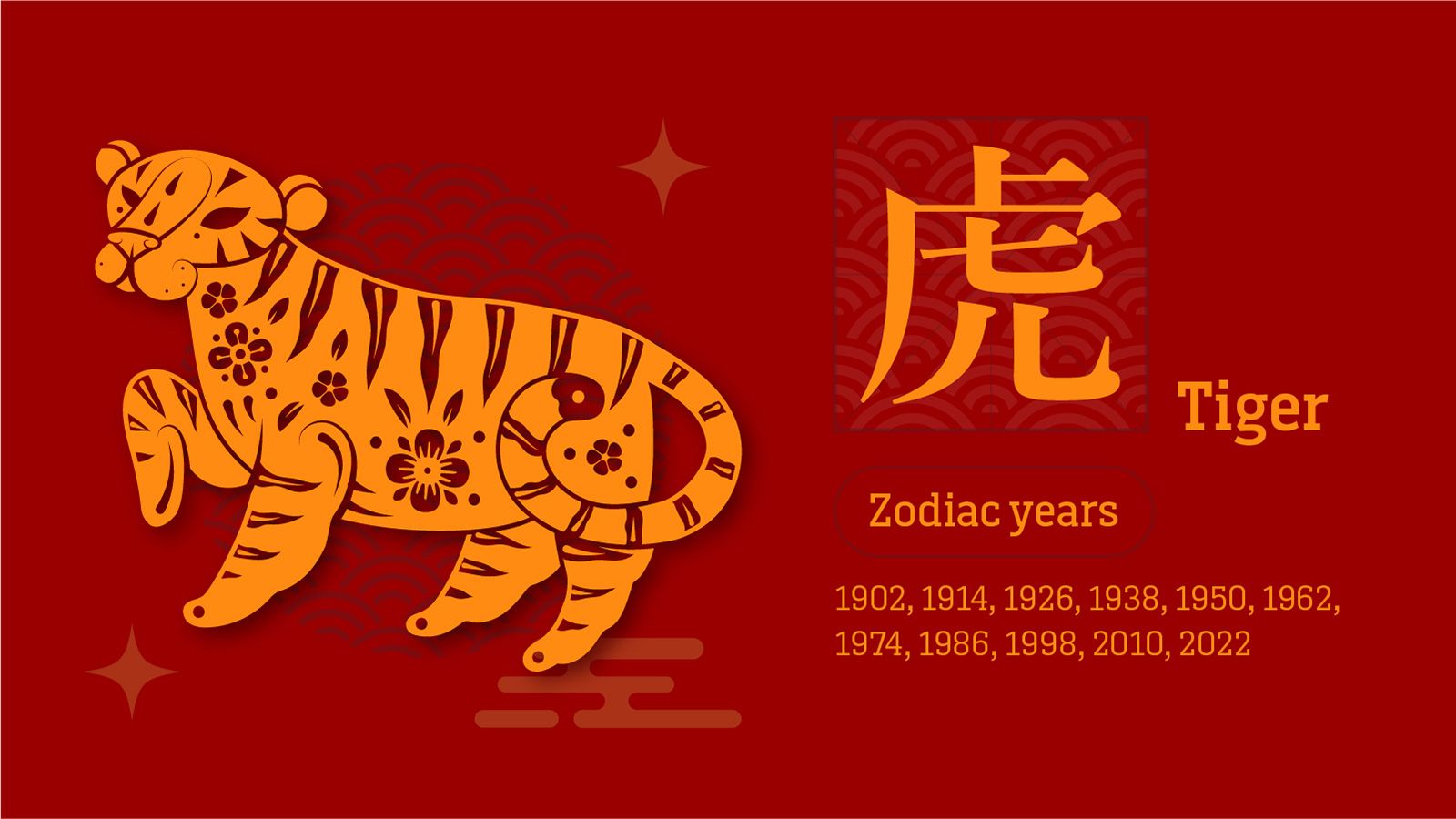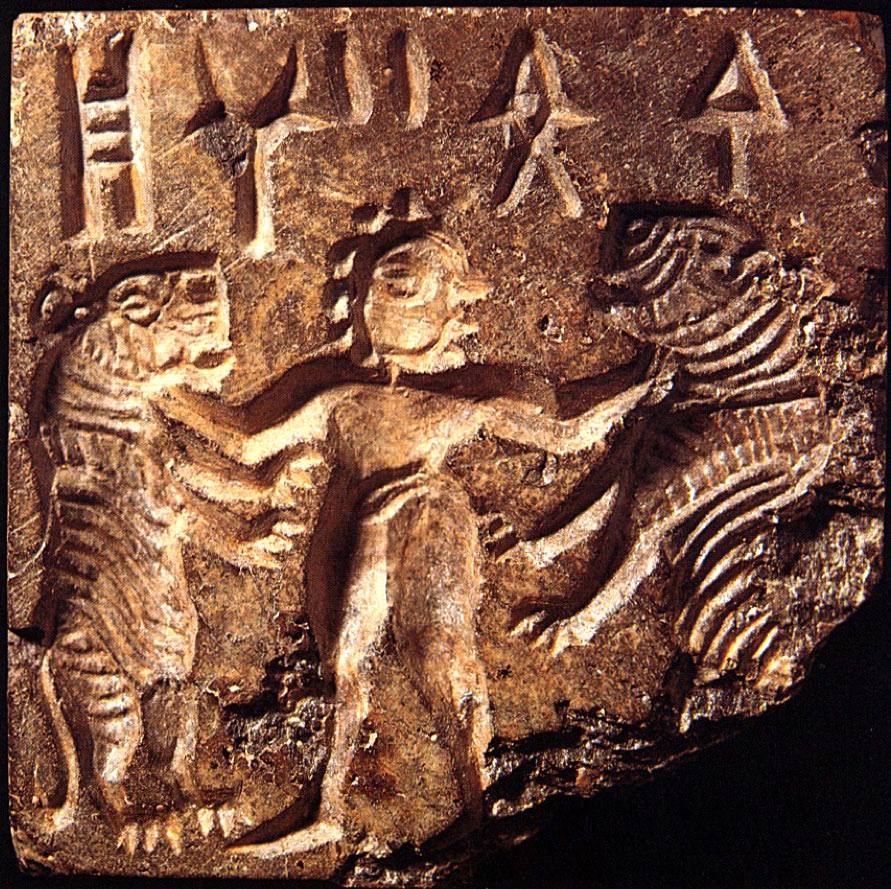It is easy. Every tenth person chooses a new animal and you have to put at least a nice photo, but you can accompany it with a poem or a thought you have or whatever you have learned about that animal.
As usual, the proposer starts.
Tiger
Today I learned there are four types: Sumatran, Siberian, Bengal and Caspian. The last one is totally new to me. I did not imagine they existed.
Once, I watched two tigers be fed at the Brooklyn Zoo and it is an image I cannot forget. The feeding was done by a slot at 3 and a half meters high and the tigers standed up only on their hind limbs and we could watch them through the separating glass. You could enjoy the magnificence of the animal standing up like that, 3 meters long. A very beautiful memory!
2. Ocelli ( false eyes)

 Tigers have distinctive white circular spots on the backside of their ears. There are two ideas as to the function of these eyespots. One of which is that they function as "false eyes"; making the tiger seem bigger and watchful to a potential predator attacking from the rear. The other idea is that they play a role in aggressive communication because when threatened tigers may twist their ears around so that the backs face forward. This prominently displays the distinctive white markings. The function of the white markings is probably a combination of both ideas.
Tigers have distinctive white circular spots on the backside of their ears. There are two ideas as to the function of these eyespots. One of which is that they function as "false eyes"; making the tiger seem bigger and watchful to a potential predator attacking from the rear. The other idea is that they play a role in aggressive communication because when threatened tigers may twist their ears around so that the backs face forward. This prominently displays the distinctive white markings. The function of the white markings is probably a combination of both ideas.
"The Tiger of Impermanence"
The Buddha compared "death" to a tiger.
Carnivorous animals each have their own hunting methods. Cheetahs rely on their incredible speed to catch their prey. Lions work together to lure their prey.
As for tigers, they hide in the jungle with their camouflage colors, silently approach their target, and suddenly attack.
Comparing the nature of "death" to a "tiger" is quite fitting, considering its sudden and unexpected nature.
The tiger is always there, right behind us.
Each person has their own tiger following closely.
Even today, it is silently and steadily approaching us from behind.
@ thread owner Alfa, I hope I am allowed to flood the thread.
5.
10 interesting features about tigers
Tigers are fascinating animals, from their unique stripe patterns to their almighty roar they represent strength and power all while being the most endangered big cat in the world.
1. Tiger stripes are unique.
Like the human fingerprint, each tiger’s stripe pattern is one of a kind. Individual tigers are identified by their unique stripes and counted using camera trap images to estimate population numbers, this could be in a protected area or on a bigger scale for a country population estimate.

2. Tigers can use their ears to communicate.
( I have already posted talking about their ears. How they do mimic for a scarier one)
A tigress uses the white spots on the back of her ears to communicate with her cubs. They act as a flasher to the cubs, when a tigress senses danger she flattens her ears and the cubs respond by crouching down and hiding.

3. India has over half the world’s population of tigers.
This makes counting them quite a logistical challenge! In 2018 India’s national tiger survey made it into the Guinness Book of World Records for being the largest camera trap exercise in the world.

(Tigress and cubs at Kanha Tiger Reserve, Madhya Pradesh, India.)
4. One meal a week. ( wow! I wish humans like me too can do that)
For tigers only one in ten hunts are successful; a large deer can provide a tiger with one week's food.

5. The vocal repertoire of tigers is vast.
They grunt, growl, roar, moan, snarl, chuff, hiss and gasp. It's thought that each vocalisation is used to communicate different things.

Bengal tiger (Panthera tigris tigris) in the Kanha National Park, India
6. Tigers have been around for over 2 million years.
While tigers have been around longer than humans, the impacts of human development have caused their population to decline by 97% since the start of the last century.

7. Tigers are endangered.
( well, we all know this….but mention of this requires reiteration , and I think, thinking that only, thread-owner has started this thread.
Because tiger populations have declined so significantly they’re listed as ‘endangered’ by the International Union for Conservation of Nature. This means they are considered to be facing a very high risk of extinction in the wild.

Tiger, Russian Far East
8. On average two tigers are seized from traffickers every week.
Despite an increase in tiger populations, they remain under threat from the illegal wildlife trade. The number in trade will be much higher than the estimation of approximately 2 tigers seized a week, as this is based on what is seized and reported.
WWF is calling for governments to enforce clear bans on trade in tigers and their parts and products from any source, wild or captive.

Seized tiger pelt with claws.
9. There are more tigers in captivity than there are in the wild.
There are 3,900 tigers in the wild and both China and the US each have over an estimated 5,000 tigers in captivity.
Globally, there are some legitimate conservation breeding programmes for tigers, and where appropriately managed captive tigers could be used to re-establish wild populations in the future. However, many tiger farms across Asia profit from putting their tigers and their parts and products into trade. Not only does this undermine law enforcement efforts, but it perpetuates and even stimulates demand that also drives the poaching of wild tigers.

Tigers in captivity, Asia
10. The TX2 goal is the most ambitious conservation commitment for a single species.
WWF has been working to protect tigers across Asia and for the first time in over 100 years tiger populations were reported to increase in some areas in 2016. 2022 marks the year tiger range countries will assess their progress towards the TX2 goal and to see if wild tiger numbers have been doubled.
But the work is not over. Tigers are still under threat and their populations in Southeast Asia are declining.

Tigress with cubs, India.
[ ref : https://tigers.panda.org/news_and_stories/stories/wwfs_top_10_facts_about_tigers/ ]
6.
Tx2
TX2 stands for 'Tigers times two', signalling the goal to double wild tigers.

The TX2 goal is a global commitment to double the world's wild tigers by 2022.
From a population of perhaps 100,000 a century ago, wild tiger numbers hit an all-time low of as few as 3,200 in 2010.
That same year, all 13 tiger range governments came together for the first time at the St Petersburg Summit where they committed to double the number of wild tigers by 2022, the next Chinese Year of the Tiger. WWF played a critical role in creating a shared vision for tiger conservation by committing to the same goal.
The TX2 goal is a global goal, and WWF is putting its full force behind this ambitious effort.
A plan is not enough, we need leaders to take action.
The St Petersburg Tiger Summit set forth a visionary goal, igniting political momentum at the highest levels to ensure the future of wild tigers are given the priority, effort, innovation and investment they deserve. This resulted in the Global Tiger Recovery Plan, providing a blueprint for each country to reach the TX2 target.
Through the Global Tiger Initiative, Global Tiger Forum and other critical platforms, WWF continues to drive the TX2 goal forward, supporting the 13 tiger range governments to take action and fulfil their commitments with partnership, policy advice, and collaborative solutions.
Tiger populations are now increasing in some of the countries with the most wild tigers: India, Nepal, Bhutan and Russia. They are also increasing in China. An enormous and rare conservation success never before achieved in tiger conservation.
This success has been partly achieved due to the political support, funding, collaboration and innovation given to tigers by the inspirational TX2 goal.
Doubling wild tigers is possible, but only with the full commitment from governments, businesses, conservation partners and communities.
( interested people can go through the following link, lot of insight is provided.)
[ ref : https://tigers.panda.org/our_work/about_tx2_public/ ]
One of best-known animals is the tiger. Most people, not knowing a real one, recognizes this cat and associates it with attributes such as strength, fierceness, and power. Impressive, right? Considering that its historical range has been only the Asian continent.
Tigers are part of the popular culture and many characters, sometimes anthropomorphized, are tigers. On the other hand, it is understandable that many Asian countries give a particular role to these felines in the formation of their culture and folklore.
TIGERS IN ASIAN CULTURE
Thousands of years ago, Tigers walked at their leisure in Asian territory, making it relatively common for villagers to find them. They did not overlook their beauty, their ability and their effectiveness in hunting. Perhaps China is the richest country in myths, representations, traditions, and legends related to Tigers.
According to traditional astrology, the first tiger in the world had its origin with the metamorphosis of the Alioth star of the Big Dipper Constellation.
Chinese art has an impressive amount of objects with tigers, symbolizing the earth and matter as opposed to the dragon, which represents the spirit. In stories that have passed from generation to generation, Tigers are the protectors of good people and kill evil men. In houses and temples are common the paintings of these cats, which are believed to drive away the evil spirits. Already in Imperial China, the war was personified with the figure of a tiger. Even today it can be found in many tombs and monuments.
It is the third animal of the 12 that form the signs of the Chinese zodiac, and they think that those under the Tiger are brave, strong, tenacious and sympathetic people. According to traditional astrology, the first tiger in the world had its origin with the metamorphosis of the Alioth star of the Big Dipper Constellation. And on the birthday of the tiger according to the lunar calendar, southern China women worship the white tiger at the same time they are placed in front of the temples effigies with the figure of the cats so that the people venerate them. In fact, the white tiger is one of the four symbols of the Chinese constellations and represents the west and the fall season. On the other hand, the Bengal Tiger is paramount in the traditions and culture of India. It associates with the deities Shiva and Durga, and members of the Warli tribe worship Warghia, the lord of the tigers while in the south the god Ayyappan is associated with the cat and the warrior goddess Durga is depicted riding a tigress in the battle.
On the other hand, the Bengal Tiger is paramount in the traditions and culture of India. It associates with the deities Shiva and Durga, and members of the Warli tribe worship Warghia, the lord of the tigers while in the south the god Ayyappan is associated with the cat and the warrior goddess Durga is depicted riding a tigress in the battle.

Possibly, the first civilizations that included the tiger in its culture were Mohenjo-Daro and Harappa settled in the Indus valley 5,000 years ago. They had symbols of these cats engraved and used as amulets.

In Buddhism, the tiger symbolizes anger. The Tungus peoples, currently located in Siberia, regard the Siberian tiger as being close to a deity. This subspecies is the national animal of South Korea, while the Bengal tiger is from India and Bangladesh. There are many examples of the use of the figure of this cat in the culture of Asian people, but they are so diverse that there is no space to describe them all.
There are many examples of the use of the figure of this cat in the culture of Asian people, but they are so diverse that there is no space to describe them all.
TIGERS IN WESTERN CULTURE
In the culture of the West, Tigers appear in a lot of stories, films, cartoons, songs and even publicity. The most famous have been characters in movies and cartoons, such as Richard Parker of the film the Life of Pi, 2012. It is also well-known Shere Khan, the antagonist of the storybook collection of The Jungle book (1894) of Rudyard Kipling and the Disney film of the same name, based on the book of Kipling. Tigger, the friend of Winnie the Pooh in the cartoons and books of Alan Alexander Milne, is very famous and even the Disney studio produced a film only about him.

Less known by current generations is a poem by William Blake titled The Tyger and published in 1794 in his collection Songs of Innocence and Experience. Another book that mentions Tigers is Man-eaters of Kumaon, first printed in 1944. This work was the result of the adventures of Jim Corbett, a man who during the early years of the 20th century used to hunt “Man-eaters” in India, including Tigers. From his experiences, he became a conservationist, and a national park bears his name: Jim Corbett National Park.
Famous Tigers in popular culture are also: the Hungry Tiger from the Oz Books of L. Frank Baum, Rajah, the Princess Jazmine’s mascot in the Disney movie Aladdin (Aladdin, 1992), Kellogg’s cereal “Tony the Tiger” and many others.
A fictional tiger that has kept us all laughing for years is Hobbes, a stuffed tiger of a young boy named Calvin. The two have many adventures together. This storyline originated as a comic strip, but now you can find books in the Calvin and Hobbs series as well.
Undoubtedly, the tiger is one of the most famous animals in the world.
Even though some of the species of tigers are extinct, they continue to be a part of our popular culture.
TIGER SYMBOLISM
No one can deny the majestic beauty of the tiger or the power that it represents, the reason why it has always been present in many forms of culture.
As we saw, there are many stories in mythology and folklore that include this magnificent creature. There is also plenty of art from ancient times that depict the power of the tiger because in many cultures, was highly respected.
Recent Discussions
-
What was the last song (non Asian) that you listened to? #231 seconds ago - onigen
-
Can't delete titles from custom lists2 minutes ago - Elisheva
-
Actresses who act as mothers in Thai Drama's are beautiful!!6 minutes ago - Elisheva
-
Japanese variety/foodie programs6 minutes ago - Saburo
-
/ᐠ. .ᐟ\ฅ hello there7 minutes ago - Moonlight
-
Which Was the Last Drama Episode You Watched? Part 314 minutes ago - Moonlight
-
Order that shows appear on our lists14 minutes ago - Elisheva
Hottest Discussions
-
♥️Count to 7000000♥️1 minute ago
-
10 dramas/movies with ____? #45 hours ago
-
Which Was the Last Drama Episode You Watched? Part 314 minutes ago
-
Change 1 letter to make a new word #22 hours ago
-
Last Asian Song You Listened To?2 hours ago
-
Last NON Asian Movie you watched? #215 minutes ago
-
The GIF Train! ----> (Rules on page #1)1 minute ago






 sohonee:
sohonee:

